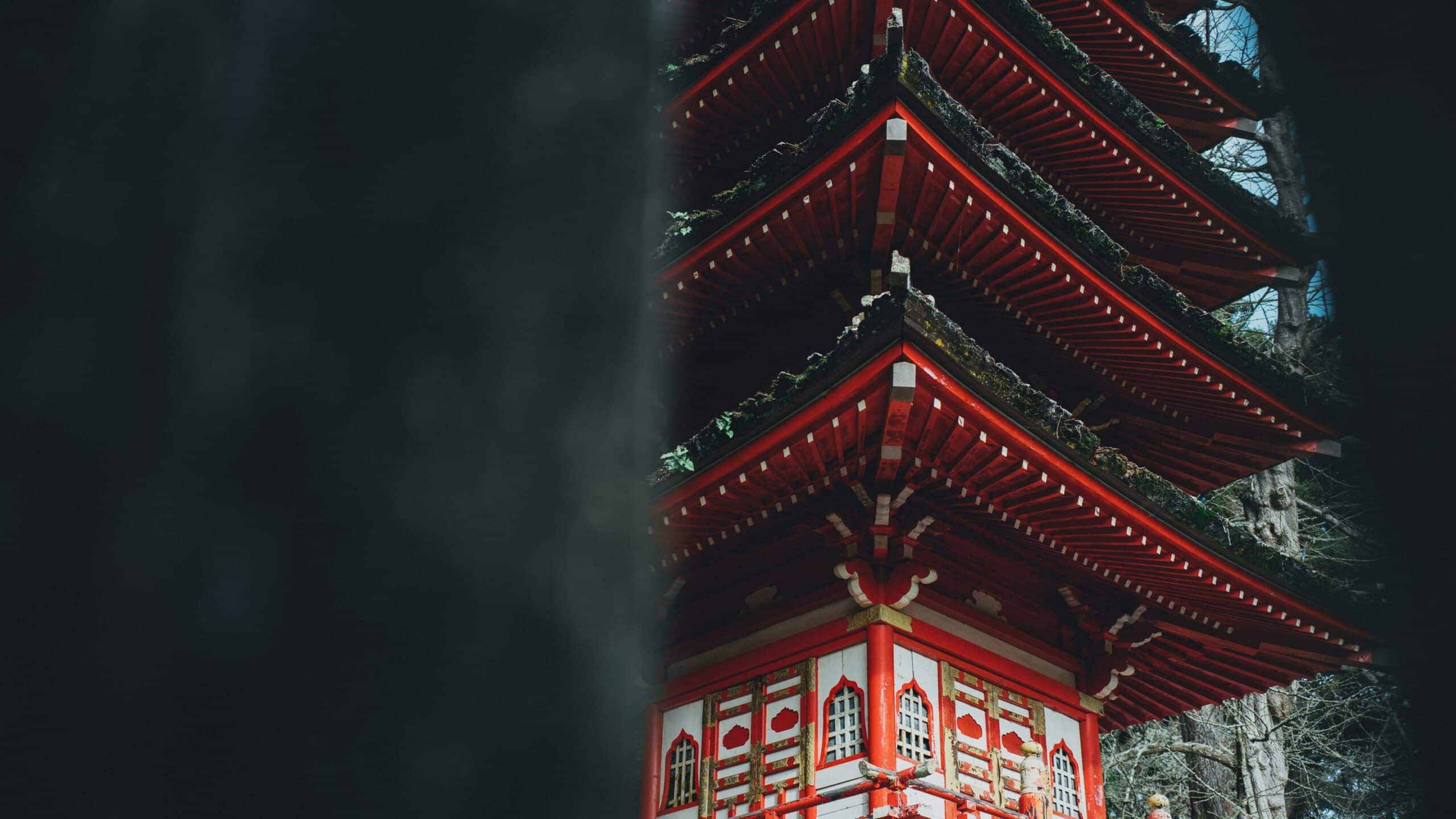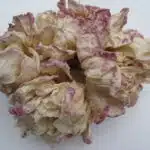Nothing quite compares to the beauty of a Japanese Rose in full bloom. These magnificent flowers can be found in all sorts of gardens, from small cottage gardens to grand estates and everywhere in between. The vibrant blooms are a stunning sight that never fail to impress and delight gardeners. No matter if you’re an experienced green thumb or a beginner gardener, growing and caring for these captivating roses is not as difficult as you may think!
The Japanese Rose (Kerria japonica) is an easy-to-care-for deciduous shrub that is native to China, Japan, and Korea. But don’t let their exotic origins fool you – they are hardy plants that will thrive just about anywhere with the right growing conditions. In fact, these low-maintenance roses are so resilient they require minimal care yet still produce an abundance of beautiful flowers year after year!
Whether you have a sunny spot in your garden or a shady one, adding some Japanese Roses is sure to bring your outdoor space alive with their cheerful blooms. With proper planting and regular maintenance, you can enjoy the beauty of this delightful shrub year after year. Read on for some helpful tips on how to grow and care for Japanese Roses!
Choosing The Right Japanese Rose
Choosing the right Japanese rose is like finding a hidden gem in a sea of flower. With the right knowledge and care, these delicate blooms can provide your garden with an air of beauty and elegance that will last for years to come.
When selecting a variety of Japanese rose, consider its color, size, bloom time, and fragrances. Different varieties are available in shades of pink, white, yellow, red and even dark purple. Also look at the size – some plants can grow up to 8 feet tall! The bloom time is also critical – some only bloom for a short period while others have multiple flowering periods throughout the year. Finally, take note of the fragrance – some varieties emit a strong scent while others have no smell at all.
To ensure success with your Japanese roses it’s important to prepare the planting site beforehand. Make sure that you are planting in well-draining soil that has plenty of organic matter mixed in. It’s also important to select an area where there is ample sunlight exposure – 6 hours per day is ideal – as this will result in better flowering and healthier plant growth overall. Finally, make sure to space out each bush properly when planting so they have enough room to spread out without becoming overcrowded.
Preparation Of The Planting Site
Once you have selected the right Japanese rose for your garden, it is time to prepare the planting site. This is an essential step in ensuring a successful growing experience. As part of this preparation, it’s important to evaluate the soil type and condition in the area you are planning to plant your rose. If needed, amendments or fertilizer can be added to ensure that there is sufficient nutrition for your flower. Additionally, consider the pH level of the soil and adjust as necessary for optimal growth.
When selecting a planting site, make sure that it receives at least four hours of direct sunlight per day and is protected from strong winds and frost during winter months. Also, keep in mind that roses prefer slightly acidic soils with a pH between 6 and 7. In addition, make sure that the spot where you plan to plant has adequate drainage; otherwise water may collect around its roots which could lead to root rot or other issues over time.
Finally, once you have identified an appropriate location with suitable soil conditions and adequate sunlight exposure, be sure to clear any existing weeds or debris from the area before planting your Japanese rose. This will help create an ideal environment for its healthy growth while also reducing competition from other plants in the vicinity.
Planting The Japanese Rose
Planting the Japanese rose is a special moment for any gardener. The deep red of the petals and the slight scent of their aroma can fill any garden with beauty and elegance. When planting this stunning flower, it’s important to take your time. Make sure you are working in an area that will provide adequate sunlight and drainage while also protecting it from cold winds. By following these steps, you’ll be able to ensure that your Japanese roses get off to a great start!
When planting this beautiful flower, make sure to use well-draining soil and dig a hole that is twice as wide as the root ball of the plant. It’s also important to amend the soil with plenty of organic matter such as compost or peat moss. Position your Japanese rose in the center of the hole and fill it back up with amended soil, tamping it down firmly around the base of the plant. Water thoroughly after planting to ensure that its roots have plenty of moisture for new growth.
Finally, mulch around your newly planted Japanese rose with an organic material like wood chips or shredded bark. This will help retain moisture in the soil while also preventing weeds from taking over – two important tasks for keeping your rose healthy and happy! With proper care and attention, you’ll be able to enjoy blooms from this stunning flower all season long.
Water Requirements For Japanese Roses
Water requirements for Japanese roses are an important part of their care. Although they are not particularly picky about water, they do need to be watered regularly and thoroughly. To ensure your Japanese rose is getting enough water, it’s essential to understand how much and how often to give it.
The ideal amount of water for a Japanese rose will depend on the climate in which it is planted. Generally speaking, these plants need about 1-2 inches of water per week during the growing season, which runs from spring through fall in most climates. During particularly hot and dry spells, you may need to increase watering frequency slightly. You can check the soil moisture by sticking your finger into the soil up to your first knuckle; if it feels dry when you withdraw your finger, it’s time to water again.
It’s also important that you avoid over-watering your Japanese rose as this can have a negative impact on its health. This means that you should never leave standing water in the pot or in the bed around the plant; instead use a soaker hose or other slow release irrigation system. This way all of the soil surrounding the roots will become evenly saturated rather than a single area becoming overly wet. With proper watering techniques, your Japanese rose should thrive throughout its growing season!
Sunlight Requirements For Japanese Roses
Are you looking for the best way to ensure your Japanese roses thrive? Sunlight is a crucial factor for the growth and nourishment of Japanese roses, so let’s take a look at how much light these plants need.
As an expert in botany and gardening, I would recommend that you ensure your Japanese roses get full sun in the morning. This will provide them with the energy they need to grow strong stems and healthy foliage. During midday and late afternoon, they should be provided with partial shade to avoid wilting in the hot sun.
If you live in a cooler climate, then your Japanese roses may require more direct sunlight than those grown in warmer climates. To help your plants get enough light even on days when there’s less direct sunlight available, consider providing artificial light or moving your plants around to better catch the sun’s rays. With proper care and attention, your Japanese rose will thrive!
Now that we’ve discussed how much sun your Japanese rose needs, let’s move on to exploring soil requirements for optimum health and longevity of these beautiful blooms.
Soil Requirements For Japanese Roses
A Japanese rose is a beautiful and delicate flower that requires the proper care to ensure it thrives. To get the best results, it’s important to understand the soil and sunlight requirements for growing this type of rose.
The soil for Japanese roses should be well-draining and slightly acidic, with a pH between 6.0 and 6.5. It should also contain plenty of organic matter, such as compost or aged manure, to help improve drainage and retain moisture. Adding a layer of mulch around the base of the plant can also help retain moisture in the soil while keeping weeds at bay.
When it comes to sunlight requirements, Japanese roses prefer full sun—at least six hours per day—but can tolerate some shade. If you are growing your roses in an area that receives more than eight hours of direct sunlight per day, you may want to provide some shade during the hottest part of the day to protect them from scorching. With proper soil and sunshine, these delicate blooms will reward you with their beauty all season long!
Fertilizing Japanese Roses
Fertilizing Japanese roses is an essential part of their care. As any experienced gardener will tell you, roses require regular feeding to maintain their health and vitality. To ensure your roses stay in bloom, it’s important to provide them with the nutrients they need to grow strong and healthy. Here are a few tips for fertilizing your Japanese roses:
• Use a balanced fertilizer: Make sure the fertilizer you use has an equal ratio of nitrogen, phosphorus, and potassium. This will help keep your roses healthy and thriving throughout the season. • Feed your Roses Regularly: Roses should be fertilized at least once a month during the growing season to ensure they get all the nutrients they need. Make sure you follow the directions on the package when applying fertilizer to avoid overfeeding or burning your plants. • Add necessary micronutrients: Rose plants need a variety of trace elements such as iron and zinc for optimal growth. Adding these micronutrients can help make sure your roses have everything they need for abundant blooms and lush foliage.
By following these simple steps, you can ensure that your Japanese roses get all the nutrients they need to stay healthy and beautiful year round. With proper care, you’ll have plenty of gorgeous blooms to enjoy! Now that we’ve discussed fertilizing Japanese roses, let’s move on to pruning them for optimum health and beauty.
Pruning Japanese Roses
Pruning Japanese roses is an essential part of their care and maintenance. Proper pruning can ensure that these beautiful flowers remain healthy and looking their best. It’s important to understand the pruning techniques that are most beneficial for Japanese roses in order to maximize the health and vitality of your plants.
When it comes to pruning Japanese roses, timing is key. Pruning should occur in late winter or very early spring, before new growth begins. This helps ensure that any dead or damaged branches are removed prior to the appearance of new shoots. Additionally, it’s important to make sure that any damaged or diseased branches are carefully trimmed away so as not to spread any infection throughout the plant.
Once you’ve identified any dead or diseased branches, it’s time to begin trimming away the excess foliage. Make sure not to remove too much foliage from the plant as this can leave it vulnerable to disease and pests. When trimming back a rose bush, always start by cutting away about one-third of its total length and then work your way up from there until you achieve your desired shape and size. If you’re unsure how much foliage to remove from a particular branch, it’s best practice to err on the side of caution and only remove what’s necessary.
By following these simple pruning tips, you can ensure that your Japanese roses remain healthy and vibrant all year long! With regular pruning, your plants will be better equipped to withstand pests and diseases in addition to looking their best during every season.
Controlling Pests And Diseases
Controlling pests and diseases is an important part of caring for Japanese roses. This is evidenced by the fact that, according to a recent survey, up to 80% of rose plant losses can be attributed to pest infestations or diseases. As a specialist in botany and gardening, I’d like to share some tips on how to protect Japanese roses from common pests and diseases.
Prevention is key when it comes to dealing with pests and diseases. You should regularly inspect your Japanese roses for signs of pest infestation or disease. If you spot any, take swift action by removing affected leaves and stems, as well as any nearby affected plants. Additionally, ensure that your plants are growing in well-draining soil, as waterlogged soil can lead to fungal infections.
It’s also important to apply appropriate chemical treatments if necessary. For example, a systemic insecticide can help get rid of aphids that may be attacking your Japanese roses. However, it’s best to use organic products whenever possible since these will have less of an impact on the environment than synthetic products. Furthermore, avoid overusing chemical treatments since this can have an adverse effect on beneficial insects such as honeybees which are essential for pollination.
By following these steps, you’ll be able to protect your Japanese roses from common pests and diseases. This will not only help you maintain healthy plants but also ensure that they continue producing beautiful blooms throughout the season. So make sure you practice good rose care techniques and keep checking your plants regularly! Transitioning into propagating Japanese Roses is a great way to expand your rose garden with more beautiful blooms!
Propagating Japanese Roses
Ever wondered how to propagate Japanese roses? Propagating this beautiful flower is not as difficult as it may seem. With the right instructions, anyone can learn to grow and care for these lovely plants. So, what do you need to know about propagating Japanese roses?
The first step is to select a healthy stem with at least two nodes. Nodes are the areas on the stem where leaves or flowers have developed. Cut the stem just below a node and remove any leaves or flowers from it. Then, dip the bottom of the stem in rooting hormone powder before planting it in moist potting soil.
Next, water thoroughly and keep the soil moist during rooting by using a misting bottle. The best way to create an ideal environment for your new plant is by using a plastic bag or cloche over it. This will help maintain humidity levels and protect from wind and direct sunlight. Keep an eye on your plant and make sure you water regularly until you see signs of new growth before removing the bag or cloche.
With these steps, you can successfully propagate Japanese roses in no time! As with any other type of rosebush, winter care is essential for keeping them healthy and happy year-round. Knowing how to prepare your plants for colder months will give you much better results when spring arrives again!
Winter Care For Japanese Roses
Winter care for Japanese roses is like a protective blanket, keeping them safe from the frosty winter air. It requires careful attention and dedication to ensure your Japanese roses thrive through the colder months. Here are four key steps to take when caring for Japanese roses in winter:
Insulate the roots of your Japanese rose by adding an extra layer of mulch around the base of the plant. This will help protect them against sudden temperature drops and keep them warm enough to survive.
Prune back any dead or dying stems as soon as possible to reduce potential disease spread among other branches. This will also help promote healthy new growth in springtime.
Water your Japanese rose sparingly during winter, as they don’t need much moisture during this time. Over-watering can lead to fungal diseases that can be detrimental to its health.
Place some sort of cover over your Japanese rose if you know a hard frost is coming, such as a sheet of burlap or old newspaper – this will help shield it from freezing temperatures at night and provide an extra level of protection from harsh weather conditions.
By taking these precautions, you can ensure that your Japanese rose is well-equipped to make it through winter without any major damage or loss of health. With a little bit of extra TLC during this period, you’ll be sure to have a beautiful bloom come springtime! Moving forward, we’ll look into common diseases of Japanese roses and how best to manage them should they occur.
Common Diseases Of Japanese Roses
As with all plants, Japanese roses are susceptible to diseases and pests. These can range from mild to severe, but all should be taken seriously and treated accordingly. In this section we will look at some of the most common diseases associated with Japanese roses and how best to deal with them.
When dealing with any disease it is important to identify the issue correctly so that you can treat it correctly. Here are five of the most common diseases affecting Japanese roses:
• Powdery Mildew: A white or grey powdery substance on the leaves or stems of your rose bush that can stunt growth; • Black Spot: Small black spots on leaves which can cause them to yellow and drop off; • Rust Disease: Orange, red or yellow spots on leaves which may eventually cause defoliation; • Botrytis Blight: Greyish-brown lesions on the petals; and • Aphids: Tiny insects that feed on plant sap, leaving a sticky residue behind.
The best way to prevent these diseases is by maintaining good hygiene practices in your garden – keep pruning tools clean, water early in the morning and remove any diseased foliage as soon as possible. Planting your rose bush in a sunny spot will also help reduce disease risks. It’s also a good idea to use mulch around your rose bush during winter months as this will help protect the roots from extreme temperatures. Finally, using a systemic fungicide when required can help control fungal spores before they have chance to spread further throughout your garden.
By following these simple steps you should be able to keep your Japanese rose healthy and beautiful for many years to come!
Common Pests Of Japanese Roses
It goes without saying that caring for japanese roses requires a good deal of attention, and this includes being aware of the common pests they may attract. Like a ticking time bomb, these pests can cause an array of issues if left unchecked. To prevent any unwelcome surprises, it pays to be proactive and take steps to keep them away from your garden.
First on the list are aphids, which can often be found happily feasting on the leaves of your japanese rose plants. These tiny green insects are drawn to soft new growth and will suck out all the sap from a leaf if left alone. The result is deformed or discolored foliage that can affect the health and beauty of your plants. If you spot any signs of aphid activity, treatment with an insecticidal soap or neem oil should help eradicate them quickly.
Other destructive bugs include spider mites, Japanese beetles, and scale insects. All of these pests tend to attack weakened plants or those located in hot, dry conditions; so make sure you’re providing adequate water and protection against heat stress to keep them at bay. Regularly inspecting your roses for signs of these pests is key in preventing long-term damage – if there’s one thing you don’t want to do it’s wait until it’s too late!
Growing Japanese Roses In Containers
Japanese roses, or Rosa rugosa, are a popular species of rose that can be grown both in the ground and in containers. This versatility makes them an excellent choice for gardeners of all levels. In fact, according to a study by The Royal Horticultural Society, Japanese roses ranked among the top five most sought-after flowering shrubs in 2020.
Growing Japanese roses in containers is fairly simple and requires minimal effort. When selecting a container, choose one with good drainage holes and enough space for the roots to spread out. For optimal growth and health, fill the pot with well-draining soil and place it in an area that receives full sun exposure throughout the day. Additionally, water your roses regularly to keep the soil moist but not saturated.
For those looking to enjoy a healthy Japanese rose plant, regular pruning is essential for maintaining its shape and preventing disease buildup and infestations from occurring. Prune back any dead or damaged branches during early spring before new growth occurs. Doing this will also encourage your plants to produce more flowers throughout the summer months!
Enjoying A Healthy Japanese Rose Plant
With a little bit of care and attention, you can enjoy the beauty of a healthy Japanese rose plant. A fact that might interest you is that Japanese roses are known to be one of the most disease-resistant plants in existence. As such, they make for an excellent gardening choice for novice and experienced gardeners alike.
In order to grow and care for your own Japanese rose, there are several steps you should take. First, ensure that the soil or container where the plant is growing has good drainage; too much moisture can lead to root rot. Second, make sure to keep your rosebush pruned; this will allow it to develop a fuller shape and help prevent insect infestations. Finally, give your plant ample sunlight exposure—at least six hours per day—to ensure it blooms properly.
By following these simple instructions, you can create an environment that allows your Japanese rose to thrive and bring joy into your life (or someone else’s). So don’t delay—get out there and start growing!
Frequently Asked Questions
How Often Should Japanese Roses Be Fertilized?
Fertilizing Japanese roses can be an important part of their growth and health. As a botany and gardening specialist, I’d like to share some tips on how often you should fertilize these beautiful plants.
Figuratively speaking, Japanese roses are like small children; they need regular nourishment for optimal growth. To ensure your rose bush blooms abundantly every season, here’s a quick list of things to remember:
• Fertilize the rose bush once every two weeks during the growing season • Use an organic fertilizer or a balanced liquid fertilizer • Apply 1/2 cup of fertilizer per plant
Whether you’re a novice gardener or experienced horticulturist, following these steps will help keep your Japanese roses healthy and vibrant all year round. During the growing season, it’s best to fertilize your roses every two weeks with an organic or balanced liquid fertilizer. Make sure to apply 1/2 cup of fertilizer per plant for optimal results. Additionally, you may want to periodically check that the soil is draining properly and has enough moisture in order for the nutrients to reach the roots of the rose bush. By taking these simple steps, you’ll ensure that your Japanese rose thrives and blossoms more than ever before!
When Is The Best Time To Prune Japanese Roses?
Pruning Japanese roses is essential for growing strong, healthy plants. The best time to prune Japanese roses is in the late winter or early spring. Doing so will help enhance the overall health of the plant and encourage new growth. Alliteration helps to emphasize this point: Pruning promotes productivity and power.
The pruning process should be done carefully, with an eye for detail. Start by removing any dead or damaged branches, then cut away any extra foliage that has grown around the main stem. This ensures maximum air circulation between branches and allows sunlight to reach all parts of the plant more easily. To ensure a balanced shape and aesthetic look, lightly trim the sides of the bush at a 45-degree angle from top to bottom.
Finally, it is important to remember that Japanese roses should not be over-pruned as this can cause long-term damage to the plant’s health and growth potential. When pruning, always leave some healthy stems intact – they are necessary for flowers blooming in future seasons! Keeping these tips in mind will ensure your Japanese rose is well cared for and looking its best all year round!
How Much Sunlight Does A Japanese Rose Need?
Japanese roses, or Rosa rugosa, are an excellent choice for gardeners who want a low-maintenance plant with stunning flowers and foliage. These beautiful blooms do best when they get at least six hours of sun per day but can tolerate up to 8 hours. A spot that gets morning sun and afternoon shade is ideal. However, it’s important to note that in areas with intense summer heat, afternoon shade is highly recommended as the rose’s leaves may burn if exposed to direct sunlight all day.
When planting, make sure to choose a spot with well-draining soil and plenty of air circulation. If your soil is poor, amend it by adding organic matter such as compost or peat moss before planting. After planting, water regularly and deeply until the plant is established. When the plant has matured you should cut back on the amount of water it receives.
Regular pruning is also essential for keeping Japanese roses healthy and attractive throughout their growing season. Prune in early spring before new growth begins – this will help shape your rose bush and promote bushy growth as well as larger flowers over time. Pruning also encourages more blooms and keeps plants from getting leggy or unruly looking due to overgrowth. With proper care and attention, Japanese roses will reward you with years of magnificent beauty in your garden.
How Often Should Japanese Roses Be Watered?
Japanese rose plants are beautiful additions to any garden, with their pink and white flowers and glossy leaves. But they can easily dry out if not given enough water. As a specialist in botany and gardening, I find myself often asked how often these roses should be watered. Irony of the situation is that while one may think that more water is always better for plants, this isn’t necessarily true for Japanese roses.
If you are looking to grow a healthy Japanese rose plant, then you will need to provide it with enough water – but not too much! Too little water can prevent the plant from flowering, while too much can cause root rot and other fungal problems. It’s all about finding the right balance between too little and too much water.
For most gardens, Japanese roses should be watered at least once a week during the growing season (spring through autumn). This means providing the roots with around 1-2 inches of water each time. In hotter weather, more frequent watering may be needed; however, make sure the soil is allowed to dry out between each session – do not leave them standing in water.
As long as these simple guidelines are followed, your Japanese rose should thrive and give you many years of enjoyment. With proper care and attention, it will reward you with beautiful blooms that will fill your garden with color and fragrance throughout summertime.
What Is The Best Soil For Growing Japanese Roses?
Have you ever wondered what is the best soil for growing Japanese roses? To ensure your roses thrive and bloom, it is essential to select an appropriate soil that provides adequate drainage, aeration, and fertility. As a specialist in botany and gardening, let me share with you the best soil mix for growing Japanese roses.
To begin with, a sandy loam or clay loam soil is ideal for Japanese roses. It should have good drainage and be slightly acidic with a pH of 6 or 7. You can also add organic matter such as compost or manure to improve the fertility of the soil. The organic matter helps increase water-holding capacity and retain nutrients for the plants. Additionally, adding mulch over the top of the soil helps retain moisture and keep weeds away from your roses.
Finally, it’s important to give your Japanese rose plant plenty of sunlight to promote optimal growth and flowering. Aim to provide at least five hours of direct sunlight per day in order to ensure healthy blooms throughout the season. For better results, choose a spot that gets some shade during hot summer days so that its leaves don’t burn in direct sunlight. With these tips on picking out the right soil mix and providing enough sunlight, your Japanese rose will be sure to flourish!
Conclusion
Japanese Roses are a beautiful addition to any garden, but they require special care to ensure that they thrive. Fertilizing Japanese Roses regularly and pruning them at the right time will help them flourish. In addition, providing adequate sunlight and water as well as planting in the right soil can make all the difference in how healthy your Japanese Rose will be.
It is thought that Japanese Roses need full sun to bloom, however this is not always the case. Depending on what part of the world you live in, your roses may not require full sun. For example, if you live in temperate or subtropical climates, where temperatures rarely go above 86 degrees Fahrenheit during summer months (29 degrees Celsius), then partial shade may be enough for your roses to bloom adequately.
Overall, it seems that there is no one-size-fits-all approach when it comes to caring for Japanese Roses. With careful research and attention to detail, you can create an environment that is ideal for these delicate plants and reap the rewards of their beauty for years to come. With proper care and maintenance, you’ll soon have a stunning display of blooms!





























